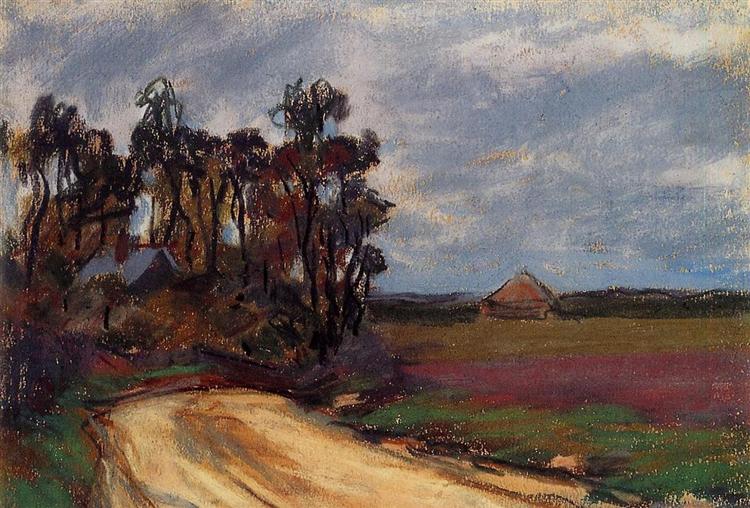Description
The painting "The Way and the House" by Claude Monet, made in 1885, offers an evocative and characteristic vision of the artist's mastery in the capture of the light and the atmosphere of nature. In this work, Monet presents a rural landscape that breathes the calm and calm of life in the field, elements that became recurring themes in his work, especially during his period in Argenuil and then in Giverny.
The composition of "The Way and The House" reveals the Master's Master in the creation of an enveloping perspective. The winding road that extends to the bottom of the painting acts as a visual guide that invites the viewer to enter the scene. This path is, in effect, a transition and movement metaphor, an element that connects the house in the center of the work with the vast surrounding landscape. The house, located prominently, is presented with a simple, rather rustic architecture, which highlights the link between human construction and nature. This contrast between what was done by man and the organicity of the environment is a subject present in many of Monet's works.
The colors used in this paint are a harmonic mixture that emphasizes the serenity of the landscape. The green of the grass and the trees are intertwined with the warm tones of the earth and the subtle gray of the house, creating a palette that is not only visually pleasant, but also establishes a cohesion between the various elements of the scene. Monet manages to capture the sunlight through loose and fast brushstrokes that suggest the movement and vibration of the air, an approach that is associated with its impressionist technique. Natural light plays a primary role, not only illuminating the house and the road, but also endowing a sense of temporality and efficiency to the scenario presented.
As for human presence, no characters are observed in this work, which reinforces the idea of a lonely and introspective landscape. By excluding figures, Monet allows the viewer to submerge completely in the intimacy of the natural environment and in the relationship with the space that inhabits. The absence of human activity suggests a moment of calm, a respite in the time that invites contemplation.
This Monet period is critical to understand its artistic evolution, since at this time he was consolidating his experience in the use of color and light. Contemporary works such as "The Pond of Nenufares" and "The Ruan Cathedral" shows parallel development in their style and technique, where the perception of the moment and the atmosphere become predominant. "The way and the house" embodies that constant search for Monet to capture the essence of the landscape in its purest state.
This painting It is also a reflection of the French rural life of the late nineteenth century, an era in which Monet, like many other artists of his time, was attracted to the beauty of the field and the simplicity of everyday life. In this sense, "the road and the house" is not only a visual representation, but an invitation to experience the peace that the connection with nature provides.
In summary, "the road and the house" is an emblematic example of Monet's impressionist style, highlighting his ability to combine light, color and composition in a work that resonates with deep emotionality. It is a testimony of Monet's love for the landscape and his search for beauty in everyday life, a milestone in a movement that reformulated the perception of art in his time and left an indelible mark on the history of art.
KUADROS ©, a famous paint on your wall.
Hand-made oil painting reproductions, with the quality of professional artists and the distinctive seal of KUADROS ©.
Reproduction service paintings With a guarantee of satisfaction. If you are not completely satisfied with the replica of your painting, we refund your money 100%.

